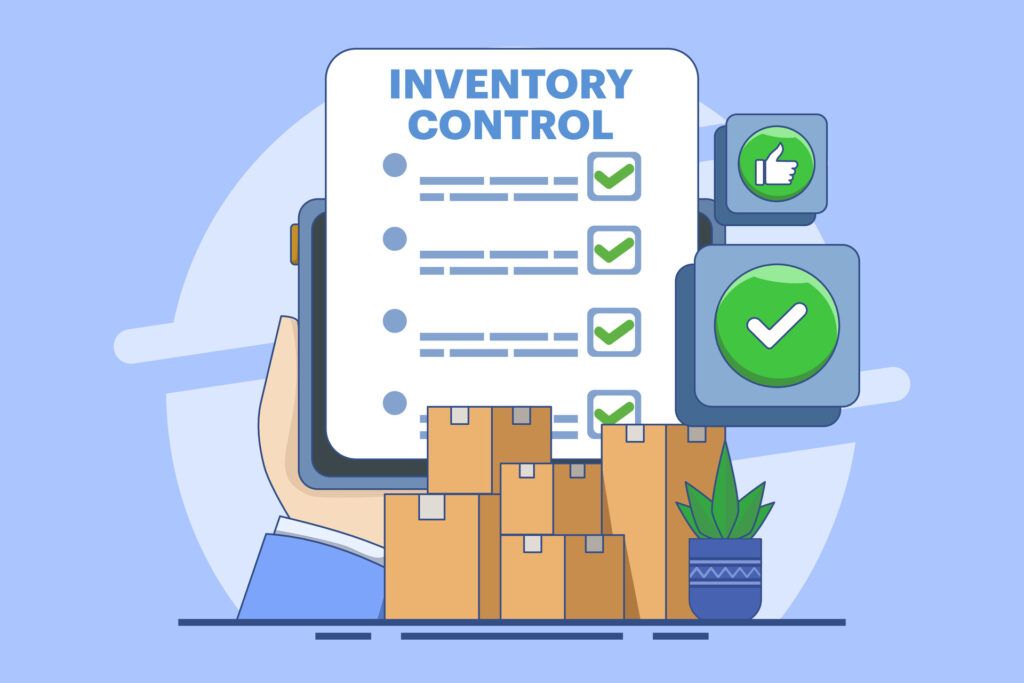Avoid common operational inventory mistakes and discover practical tips on how to streamline inventory management in small business to save time and money.
Let’s face it—inventory management can make or break a small business. Mess it up, and you are stuck with unsold products, unhappy customers, or worse—cash flow problems. Get it right, though, and you’re setting yourself up for smooth operations and happy customers.
But hey, mistakes happen. I’ve learned (sometimes the hard way) that understanding common inventory pitfalls is the first step to avoiding them. Here’s a rundown of what not to do when managing your inventory, along with actionable tips to stay on top of your game.
Overordering: Don’t Let Excess Stock Eat Your Profits
We’ve all been there—thinking it’s better to have too much than too little. While surplus inventory reduction might sound like a no-brainer, it’s easier said than done. Overordering ties up your cash and clutters your storage space. Instead adopt the tips below.
Use These Tips for Overordering Inventory in Small Business
- Use inventory forecasting to predict demand based on your past sales.
- Set yourself realistic reorder points to avoid buying more than you need.
- Regularly perform inventory audits to identify slow-moving products.
Refusing to Embrace Technology: Paper Trails Don’t Cut It Anymore
Relying on manual systems for inventory record-keeping might seem cost-effective at first. But trust me, one misplaced spreadsheet, and you’ll be wishing you had upgraded.

Technology Tips
- Invest in inventory software for small business to track stock levels in real-time.
- Explore barcode systems for inventory to streamline stock-taking.
- Look into cloud-based inventory solutions for accessibility on the go.
Selecting the right inventory management software
Selecting the right inventory management software is key for small businesses aiming to streamline operations and maintain accurate stock records.
When choosing inventory management software, consider factors like integration capabilities with your existing systems, scalability to accommodate business growth, user-friendliness, and cost-effectiveness to ensure it meets your specific operational needs.
Here are some top-rated options to consider:
Zoho Inventory: Offers a free plan suitable for small businesses, with features like multi-channel selling, order fulfillment, and warehouse management.
Square Inventory: Integrated with Square’s POS system, it provides real-time inventory tracking, low-stock alerts, and reporting tools, ideal for retail businesses.
Sortly: A user-friendly platform that allows businesses to create a visual inventory with photos, track items across multiple locations, and generate custom reports.
Katana: Designed for manufacturing companies, it offers features like bill of materials, production scheduling, and real-time inventory updates.
SalesBinder: A versatile tool that handles inventory management, customer accounts, and invoicing, suitable for various industries.
Neglecting Inventory Categorization: Not All Products Are Equal
Treating every item in your inventory the same is like trying to wear one-size-fits-all clothing—it just doesn’t work. Without proper inventory categorization methods, you’ll struggle to prioritize what matters most.
Solution
- Use the ABC analysis: Group items into A (high-value), B (moderate-value), and C (low-value) categories.
- Monitor inventory turnover optimization for high-priority products.
- Keep an eye on seasonal inventory planning to manage demand fluctuations.
Skipping Regular Physical Counts: Out of Sight, Out of Mind

If you’re not conducting regular physical inventory counts, discrepancies can sneak up on you. What’s on paper might not match what’s on the shelf!
Solution
- Schedule routine inventory cycle counts to catch issues early.
- Use real-time inventory tracking to keep tabs on stock levels daily.
- Create a checklist for your inventory audits to ensure nothing gets overlooked.
Overlooking Shrinkage: Small Losses Add Up Fast
Inventory shrinkage prevention isn’t just for big retailers. Shoplifting, employee theft, or even damage during storage can quietly eat into your profits.
What to Do Instead
- Train staff on handling and storing items properly.
- Install security cameras and use inventory monitoring software to spot patterns.
- Conduct surprise inventory audits to deter theft.
Poor Demand Planning: Flying Blind Without Data
Guesswork doesn’t cut it when it comes to demand forecasting for inventory. Too much or too little stock can lead to lost sales or wasted resources.
What to Do Instead
- Analyze historical sales data to refine demand forecasting.
- Adjust inventory replenishment strategies based on trends.
- Stay flexible with your inventory planning tips to adapt to market changes.
Neglecting Employee Training: Your Team Makes or Breaks It

Even the best inventory management systems won’t help if your team isn’t on the same page. Untrained staff can cause miscounts, delays, or errors in handling products.
Tips on What to Do Instead
- Offer training on inventory handling mistakes and best practices.
- Assign roles and responsibilities for managing inventory processes.
- Encourage feedback to improve workflows and prevent future errors.
Conclusion – Inventory Management in Small Business
Inventory management in small business is not rocket science, but it does require attention to detail and a proactive approach. By avoiding these common mistakes—like overordering, skipping physical counts, or neglecting shrinkage—you can save yourself headaches and money.
Remember, the key is to work smarter, not harder.
Start small: upgrade your tools, train your team, and review your processes regularly. Before you know it, you will be running a tight ship and wondering why you didn’t tackle those inventory woes sooner. So, are you ready to master inventory management?
Give us a call for assistance TODAY.
Related Articles
Inventory Management in Small Business: 5 Mistakes to Avoid
FAQs for Inventory Management in Small Business Operations
What is inventory management in small business?
Inventory management in small business refers to the process of tracking, organizing, and optimizing stock levels to ensure smooth operations, reduce costs, and meet customer demand.
How do I reduce surplus inventory in my small business?
To reduce surplus inventory, use demand forecasting, set clear reorder points, and implement seasonal inventory planning to align stock levels with market demand.
What’s the best way to prevent inventory shrinkage?
Prevent inventory shrinkage by training staff, using inventory monitoring software, conducting regular audits, and improving security measures like cameras and access controls.
Why is real-time inventory tracking important?
Real-time inventory tracking helps small businesses avoid stockouts or overstocking, improves decision-making, and enhances customer satisfaction by ensuring product availability.
How can small businesses benefit from inventory software?
Inventory software automates tracking, improves accuracy, reduces errors, and provides valuable insights for better decision-making and cost control.
References
Fabregas, K (2024) How to Manage Inventory Effectively (2025 Guide) https://www.forbes.com/advisor/business/software/how-to-manage-inventory/
Rivera, D (2024) How to Organize Inventory for Small Businesses in 9 Steps https://fitsmallbusiness.com/inventory-management-for-small-business/

